
Salty Sam’s Fun Blog for Children
Number 283
The History of Jeans
Hello Everyone

Bill and Bob love working in the garden, and when they do, they often wear jeans.
But then when they visit their friends’ houses they wear them too.
A lot of people wear jeans to parties nowadays but of course this has not always been so.
Jeans started out as working trousers. They are made of very tough material called denim.
They actually have quite an interesting history. l thought you might like to know about it…
Did you know that the word denim comes from serge de Nimes – a fabric from the town of Nimes in France?
And the word jeans comes from a kind of material that was made in Europe called jean and that was named after sailors from the town of Genoa in ltaly. They wore clothes made from this indigo-dyed fabric.
At first, this fabric was made from different fibres, but eventually it was made from cotton and dyed with indigo. This dye was made from plants to be found in both the Americas and lndia.
This dye does not penetrate the fibres of the fabric like other dyes but rather it coats it – which means that it can get worn away and this can give the material a faded look.
Jeans were worn by farm labourers and miners in the late 1800s.
ln 1848, gold was found in California and the famous Gold Rush began. People were flocking into the area trying to find large hauls of gold.
Five years later in 1853, a man called Lőb Strauss moved from New York to San Francisco to start a wholesale business selling clothes. He later changed his name to Levi. You will know the name Levi Strauss because this company still makes jeans today.
When you see photographs of the people trying to make their fortune in the Gold Rush, they are nearly always wearing denim or canvas clothes. They were rough and tough and could stand up to the harsh life the miners lived.
Eventually, the pockets of these overalls and trousers were even fixed on using metal rivets to stop them tearing off from the garment. This was an idea first put forward by Nevada tailor, Jacob Davis. Levi Strauss paid for the patent for Davis and incorporated the idea into his clothing.
He boasted that two horses could not pull his well-made jeans apart.
Jeans became popular over the whole of the United States at the beginning of the 20th century when Hollywood made a lot of western movies. Cowboys often wore jeans.
There weren’t so many pairs sold in WWll though, because a lot of people spent a lot of their time in uniform. But the American soldiers still wore jeans when they were off duty. Jeans had arrived in Europe and the Far East.
After the war, Levi Strauss began to sell clothes outside the Western United States and other companies like Wrangler and Lee started selling denim clothes too.
These clothes became very popular with teenagers in the 1950s and 1960s. ln a way they symbolised rebellion, and so many schools in America banned children from wearing them. They became ever more colourful with embroidery and patches sewn onto them. ln the 1980s, some jeans became very high fashion with designer labels on them.
Denim twill is made from two yarns – one is dyed in indigo which is more visible on the outside and one undyed which is seen on the inside of the jeans. This is why the outside of your jeans looks so different from the inside.
ln the mid-twentieth century, jeans were very hard to come by in some countries in Eastern Europe; but now you will find them all over the world.
People wear them to work whether they work in a factory or office. They wear them to informal parties and places like the theatre. People obviously find them comfortable to wear.
When jeans were first invented the people who wore them would have probably never thought this was likely to happen.
Bye bye everyone – don’t forget to subscribe to my blog!
lf you like my blog, please support it by telling all your friends and followers about it.
Thank you!
And see you again next Fun Friday!
Love and kisses
Salty Sam

www.christina-sinclair.com


Bill and Bob’s Joke of the Week![]()
![]()
Bill: How do you make a pair of jeans last?
Bob: l don’t know. How do you make a pair of jeans last?
Bill: Make the T-shirt first.

Salty Sam © Christina Sinclair 2015
Unauthorized use and/or duplication of material from this blog without express and written permission from this blog’s author and owner is strictly prohibited.
Links may be used to www.christina-sinclair.com

Picture Gallery
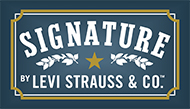
 The gold rush
The gold rush
 1950s rock and roll
1950s rock and roll


 THE SALTY SAM NEWS DESK
THE SALTY SAM NEWS DESK

This week, we went round to Auntie Alice’s house to take her some shopping and found her in the garden drilling holes in the bottom of some old shampoo bottles.
The children were intrigued to know why she was doing this.
She said that she was tying an experiment.
She was going to put the bottle in her tubs and hanging baskets and see if they would act as little reservoirs to hold water and stop the compost drying out so quickly.
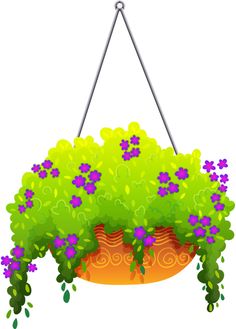
She buried the bottles in the compost with the tops sticking out at the top.
She watered the compost and then put the spout of the watering can above the top of the bottle. She could easily see when the bottle was full of water.
Now she is hoping she won’t have to water her pots so often. There are always so many other things to do in her very large garden!

*********************
*********************

 Quick Quiz
Quick Quiz
What do the following idioms mean?
- To arrive out of the blue
- To scream blue murder
- To do something until you are blue in the face
- A blue-eyed person
- Once in a Blue Moon
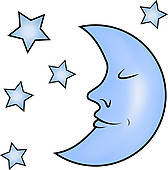



lt’s the Weekend!
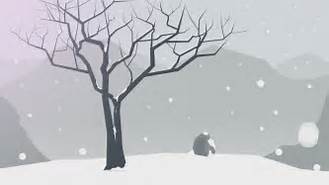
HOW TO MAKE A PATCHWORK SCARF
When you are a beginner knitter, there is a great temptation to practise your new skill big time by knitting a scarf.
This is a really bad idea though because you are so likely to drop a stitch as you knit – and it will fall a very long way down if you are not careful!
This can all be very demoralizing when you are struggling to learn a new skill. 🙄

So if you have knitted a hat and you would like to have a scarf in the same colour, here is a wonderful idea for knitting a scarf in small pieces and then you can put them all together.
When you complete all your squares, you need to put them together at right angles to each other. This will create an interesting texture if you make the scarf in one colour.

You could make the scarf in one colour or two or three or even a fantastic multi-colour scarf with lots of bits left over from knitting different things.
To make a scarf for a small child you will need to make the scarf up three squares across, but for a large child or woman, you will need four squares across. The length of it is up to you but it will be helpful for you to know that a 50g ball makes 18 – 20 squares so six balls should make a scarf big enough for an adult.
When you knit your squares, leave two ends of yarn long enough to use when you start sewing your squares together or at least long enough to thread onto a yarn needle so that you can tidy them away.
Don’t forget to sew all the ends in at the end of sewing your squares together so that the finished article is very neat.
This might take some time to do, but it is something you can do easily with the scarf keeping your knees warm as you watch television on a winter’s evening.
If you make a mistake making just little squares – there is not so much knitting to undo!

BLUE SQUARE
Using 4mm knitting needles and blue dk yarn cast on 17 stitches
Knit 1 (knit 1, purl 1) repeat the last 2 stitches to the end of the row
Knit 1 (purl 1, knit 1) repeat the last 2 stitches to the end of the row
Slip 1 (purl 1, knit 1) repeat the last 2 stitches to the end of the row
Slip 1 (knit 1, purl 1) repeat the last 2 stitches to the end of the row
The next four rows…
Slip 1 (knit 1, purl 1) repeat the last 2 stitches to the end of the row
Slip 1 (purl 1, knit 1) repeat the last 2 stitches to the end of the row
Slip 1 (purl 1, knit 1) repeat the last 2 stitches to the end of the row
Slip 1 (knit 1, purl 1) repeat the last 2 stitches to the end of the row
Repeat the last four rows three times more and you should have 20 rows altogether
Cast off
TIP
Keep note of which side your cast on end is when you start because it helps you to know if you are on a ‘going there’ row or a ‘coming back’ row
If this pattern is too difficult for you, you could try the pattern shown on the white square
WHITE SQUARE
Using 4mm knitting needles and white dk yarn cast on 17 stitches
Slip 1 (knit 1, purl 1) repeat the last 2 stitches to the end of the row
Repeat the last row 25 times (26rows)
If even this is too difficult for you, then try making your squares like the green square in the photograph.
If you want to make this one, you will have to make sure that the sides of the squares you knit are very tight, because otherwise you will have very uneven and wobbly sides to your scarf.
If this does happen after you sew your squares together, try running a length of yarn up the sides of the scarf and pull it as tight as you want it to be – then secure each end into the corner.
GREEN SQUARE
Using 4mm knitting needles and green dk yarn cast on 2 stitches
Increase at the beginning of each row until you have 20 stitches on your needle
Decrease 1 stitch at the beginning of every row until you have 2 stitches on your needle
cast off
MATERIALS NEEDED
A 50g ball of yarn will knit about 18 – 20 squares
Therefore, you will need 6 x 50g balls to make a large scarf, 4 squares by 30 squares
4 x 50g balls to make a small child’s scarf 3 squares by 20 squares
If you want to use up a lot of yarn left over from making other projects, the best thing to do is to knit it up and then see if you will need to buy any more yarn to complete the garment.
These scarves will be long enough to wrap around your head and neck and so keep your head and ears and neck warm on a really chilly day.
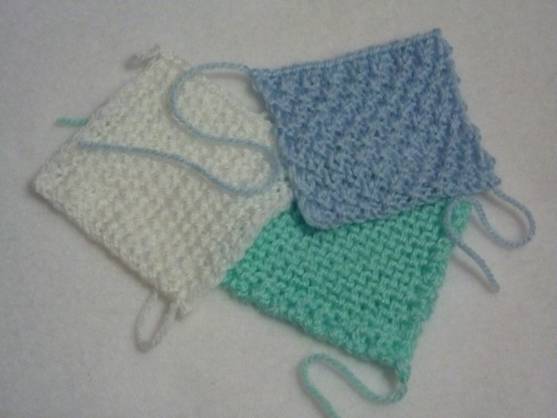
Please note that the material on this blog is for personal use and for use in classrooms only.
It is a copyright infringement and, therefore, illegal under international law to sell items made with these patterns.
Use of the toys and projects is at your own risk.
©Christina Sinclair Designs 2015


Quick Quiz Answers
- To arrive out of the blue – to arrive without warning – it is a surprise that something or someone has come
- To scream blue murder – to shout or complain with force
- To do something until you are blue in the face – to put a lot of effort into something, but probably without success
- A blue-eyed person – someone who is favoured, well-thought of
- Once in a Blue Moon – very rarely



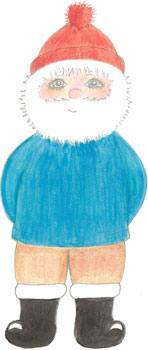
Aw, this was an incredibly nice post. Spending some time and actual effort to produce a superb article… but what can I say… I put things off a lot and never seem to get anything done.
Oh dear, l am sorry to hear that Daren.
But l am glad you like my blog anyway. Thanks for writing in.